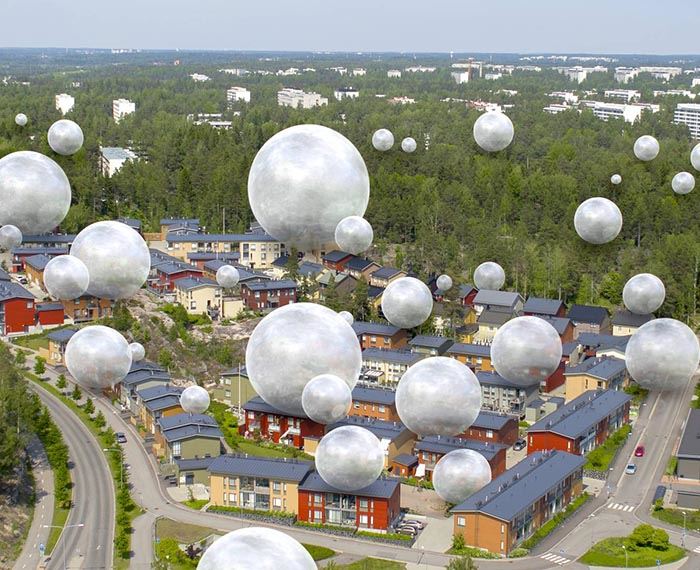Increasing the use of wood in construction has a large-scale climate impact
Metsä Group press release 9 September 2019
The benefits of wood construction include the material’s lightness and fast construction. The most relevant aspect where climate change is concerned, however, is the unique ability of wood structures to store carbon in themselves for their entire life-cycle. For example, an average Finnish single-family house built from wood stores roughly 30 tonnes of atmospheric carbon dioxide within its wooden structures. This is equal to the carbon dioxide emissions generated by the average miles driven by one person over a period of 10 years.
The biggest growth opportunities of wood use lie in industrial construction, as well as in the construction of additional floors onto existing buildings and renovating them. By increasing the use of wood, we can considerably reduce the consumption of non-renewable natural resources and construction’s carbon dioxide emissions.
“Forest industry products play an important role in the mitigation of climate change. Every wood structure stores carbon, some for as long as hundreds of years. We must move from the fossil economy towards a resource-smart bioeconomy, and increasing the volume of wood construction is one of the essential ways of doing this,” says Juha Laine, SVP, Communications of Metsä Group.
One square metre of wall built from wood is a 50-kilo carbon stock
Construction consumes more non-renewable natural resources in Europe than any other industrial sector. According to experts, an increase in wood construction would have a significant effect on the entire construction industry’s environmental impact.
“We need sustainable solutions quickly, especially in construction,” says Mikko Saavalainen, SVP, Business Development of Metsä Wood. “The environmental damage and energy consumption resulting from wood use are minimal compared to brick, concrete, aluminium, plastic or steel.”
For example, when in building a square metre of wall from wood, it creates a carbon stock of roughly 50 kilos is created. As it grows, a tree binds carbon dioxide from the atmosphere, while the production of other materials generates carbon dioxide. When a concrete wall is replaced with a wooden one, the 110-kilo carbon dioxide emission attributable to the production of the concrete wall can be avoided. Concrete remains the best option for a foundation for a building. Every wooden element of a building that functions as carbon storage is a move in a more positive direction for the climate.
Figures
- An average 140 m2 single-family home built of wood at 30,000 kg CO2 = driving a passenger car for 190,000 km
- An average 1,400 m2 apartment building built of wood at 340,000 kg CO2 = long-distance flights equal to nearly 3 million km
- A city district of 2,000 residents dominated by wooden buildings at 12 million kg CO2 = the production of more than 7,000 m3 of concrete

A giant ball in the Helsinki streetscape gives shape to wood’s climate impact – this is how much carbon a cubic metre of wood sequesters
On 9 September, a giant balloon can be seen above the roof of Allas Sea Pool in the centre of Helsinki. The balloon, with a diameter of roughly 10 metres, is filled with a quantity of gas equal to the 1,000 kilos of carbon dioxide that one cubic metre of wood binds from the atmosphere. Driving a passenger car from Helsinki to Athens would release an equal amount of carbon dioxide into the air as emissions.
Next to the balloon is a one cubic-metre wood cube. The balloon and the cube demonstrate the climate impact of wood construction, and the amount of carbon sequestered by a wooden structure.
The balloon has been made from recycled plastic collected from the sea, and it will be further recycled after use.
Read more about the experts’ thoughts on the possibilities offered by wood construction at www.metsagroup.com.
See photos and video
METSÄ GROUP
For further information, please contact:
Juha Laine, Senior Vice President, Communications, Metsä Group, tel. +358 10 465 4541
Metsä Group
www.metsagroup.com
Metsä Group is a forerunner in sustainable bioeconomy utilising renewable wood from sustainably managed northern forests. Metsä Group focuses on wood supply and forest services, wood products, pulp, fresh fibre paperboards and tissue and greaseproof papers.
In 2018, Metsä Group’s sales totalled EUR 5.7 billion, and it employs approximately 9,300 people. Metsäliitto Cooperative is the parent company of Metsä Group and is owned by approximately 103,000 Finnish forest owners.
Follow Metsä Group: Twitter LinkedIn Facebook YouTube Instagram Slideshare





